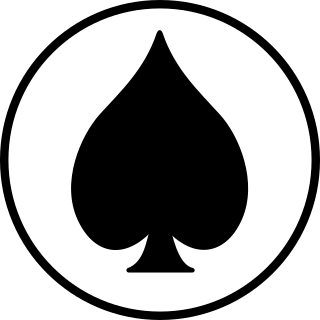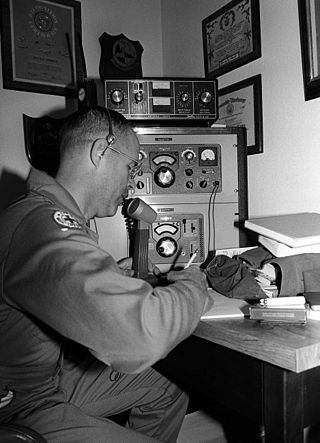
Hanko is a town in Finland, located in the southern coast of the country. Hanko is situated in the western part of the Uusimaa region. The population of Hanko is approximately 8,000, while the sub-region has a population of approximately 40,000. It is the 121st most populous municipality in Finland.

The 12th (Eastern) Division was an infantry division raised by the British Army during the First World War from men volunteering for Kitchener's New Armies. The division saw service in the trenches of the Western Front from June 1915 to the end of the war.

The Hanko Peninsula, also spelled Hango, is the southernmost point of mainland Finland. The soil is a sandy moraine, the last tip of the Salpausselkä ridge, and vegetation consists mainly of pine and low shrubs. The peninsula is known for its beautiful archipelago and long sandy beaches.
The Officers' Training Corps (OTC), more fully called the University Officers' Training Corps (UOTC), are military leadership training units operated by the British Army. Their focus is to develop the leadership abilities of their members whilst giving them an opportunity to take part in military life whilst at university. OTCs also organise non-military outdoor pursuits such as hill walking and mountaineering. UOTC units are not deployable units nor are their cadets classed as trained soldiers until completion of MOD 1 training. The majority of members of the UOTC do not go on to serve in the regular or reserve forces.

Auxiliaries are support personnel that assist the military or police but are organised differently from regular forces. Auxiliary may be military volunteers undertaking support functions or performing certain duties such as garrison troops, usually on a part-time basis. Unlike a military reserve force, an auxiliary force does not necessarily have the same degree of training or ranking structure as regular soldiers, and it may or may not be integrated into a fighting force. Some auxiliaries, however, are militias composed of former active duty military personnel and actually have better training and combat experience than their regular counterparts.

The 5th SS Panzer Division Wiking or SS Division Wiking was an infantry and later an armoured division among the thirty-eight Waffen-SS divisions of Nazi Germany. During World War II, the division served on the Eastern Front. It surrendered on 9 May 1945 to the American forces in Austria.

The Swedish Volunteer Corps during the Winter War numbered 9,640 officers and men. Sweden was officially non-belligerent during the war, so the Corps was used by Finland. The Swedish volunteers were in the front lines in the northern Salla area starting from February 28, 1940. Their losses included 33 dead, 10 missing, 50 wounded, and 130 disabled by frostbite. There were also 25 aircraft that served in the Swedish Voluntary Air Force, F19. Swedish volunteers also defended Turku in an anti-aircraft battery.

A rifleman is an infantry soldier armed with a rifled long gun. Although the rifleman role had its origin with 16th century hand cannoneers and 17th century musketeers, the term originated in the 18th century with the introduction of the rifled musket. By the mid-19th century, entire regiments of riflemen were formed and became the mainstay of all standard infantry, and rifleman became a generic term for any common infantryman.
The Irish military diaspora refers to the many people of either Irish birth or extraction who have served in overseas military forces, regardless of rank, duration of service, or success.

The Cambridgeshire Regiment was an infantry regiment of the British Army, and was part of the Territorial Army. Originating in units of rifle volunteers formed in 1860, the regiment served in the Second Anglo-Boer War and the First and Second World Wars before losing its separate identity in 1961. Its lineage is continued today by the Royal Anglian Regiment. The regiment and men are often referred to as the Fen Tigers.

The Volunteer Force was a citizen army of part-time rifle, artillery and engineer corps, created as a popular movement throughout the British Empire in 1859. Originally highly autonomous, the units of volunteers became increasingly integrated with the British Army after the Childers Reforms in 1881, before forming part of the Territorial Force in 1908. Most of the regiments of the present Army Reserves Infantry, Artillery, Engineers and Signals units are directly descended from Volunteer Force units.
The 9th Battalion, London Regiment was a Territorial Army infantry battalion of the British Army. The London Regiment was formed in 1908 in order to regiment the various Volunteer Force battalions in the newly formed County of London, and the Queen Victoria's Rifles were one of twenty six units brought together in this way.

The Battle of Hanko was a lengthy series of small battles fought on Hanko Peninsula during the Continuation War between Finland and the Soviet Union in the second half of 1941. As both sides were eager to avoid a major, costly ground battle, fighting took the form of trench warfare, with artillery exchanges, sniping, patrol clashes, and small amphibious operations performed in the surrounding archipelago. A volunteer Swedish battalion served with Finnish forces in the siege. The last Soviet troops left the peninsula in December 1941.
The Herefordshire Light Infantry was an infantry regiment of the British Army in existence from 1861 to 1967. The regiment had no lineal connection with the 36th (Herefordshire) Regiment of Foot.
The 157th Brigade was an infantry brigade of the British Army. The brigade fought in both the First and the Second World Wars, assigned to 52nd (Lowland) Infantry Division.

The Highland Cyclist Battalion was a bicycle infantry battalion of the Territorial Force, part of the British Army. Formed as part of the Volunteer Force in 1860, it became a Volunteer Battalion of the Black Watch in 1881. In 1909 it became an independent unit and served in the United Kingdom throughout the First World War. In 1920 it was converted as part of the Highland Divisional Signals.

Ukrainian volunteer battalions were militias and paramilitary groups mobilized as a response to the perceived state of weakness and unwillingness of the regular Armed Forces to counter rising separatism in spring 2014. They trace their origins to the "Maidan Self-Defense" militias formed during the Euromaidan in 2013. The earliest of these volunteer units were later formalized into military, special police and paramilitary formations in a response to the Russian military intervention in Ukraine in 2014. Most of the formations were formed or placed under command of the Ministry of Internal Affairs — as "Special Tasks Patrol Police" — and Ministry of Defence — as "Territorial defence battalions". A minority of battalions were independent of state control.

Carl-Olof Wrang was a Swedish Army lieutenant colonel. Wrang joined the Waffen-SS in 1939 but deserted and instead fought the Soviets in Finland during the Winter War. Wrang also participated in the Continuation War and saw action in the Battle of Hanko. After the war, Wrang re-entered the Swedish Army and was placed in the reserve in 1946. He worked as a factory manager for a few years, before resuming his military career. Wrang served as commanding officer of the Swedish Army Paratroop School in the late-1950s and served as a UN observer in Kashmir and with the Swedish battalions during the Congo Crisis and during the Cyprus dispute in the 1960s. He retired in 1977.
The Swedish Volunteer Company, or the Svir Company(Svirkompaniet), was a company of Swedish volunteer soldiers in the Finnish Army during the Continuation War fought by Finland and Nazi Germany against the Soviet Union in World War II. In January 1942, the company succeeded the Swedish Volunteer Battalion that had been disestablished after the Battle of Hanko in December 1941.













